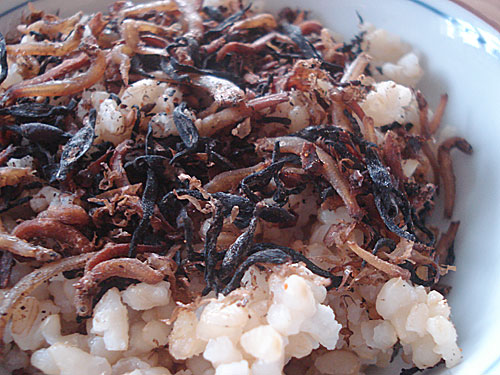
I'm cheating a bit here since this recipe has been featured already on Just Hungry. But it did get rather buried in a general article about seaweed, so here it is again in the Homemade Furikake series.
This combines hijiki, which is full of fiber and minerals, with chirimenjako, tiny little whole salted fish. You can find both at Japanese grocery stores, and Chinese grocery stores carry something similar. Since they are whole fish, they are full of calcium, and also pack a lot of umami. Many Japanese people are lactose intolerant, so they get their calcium by eating things like chirimenjako.